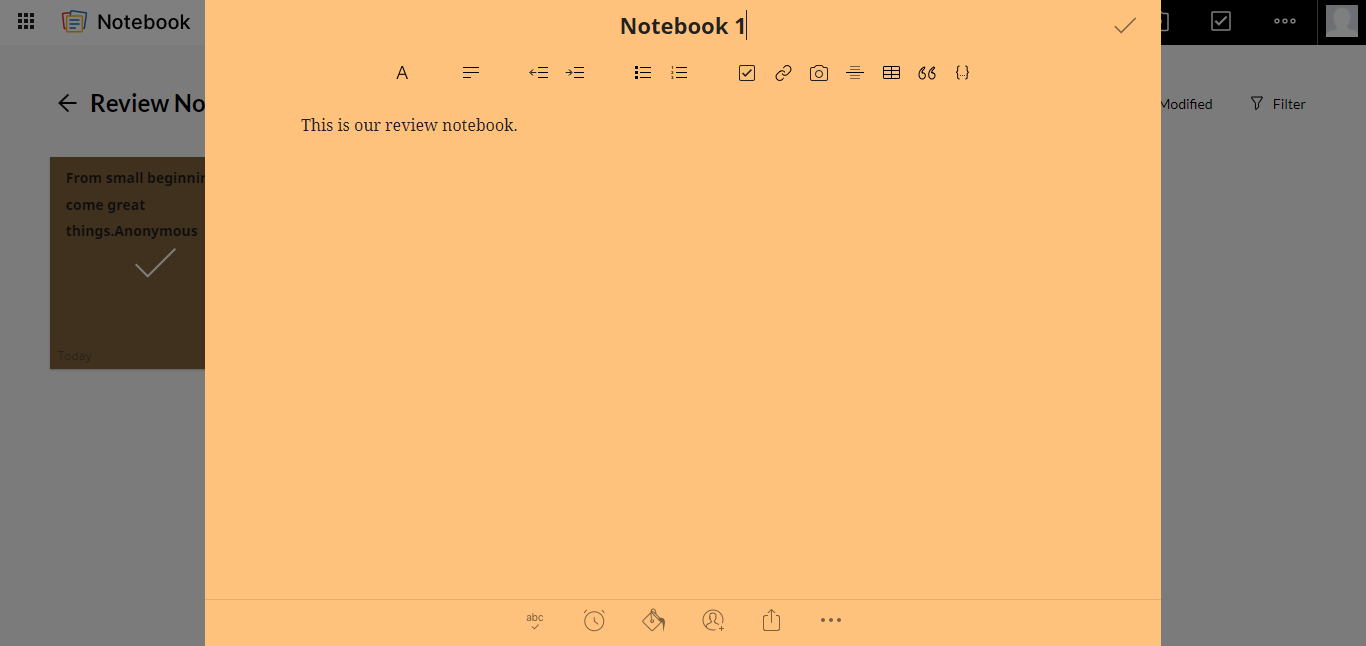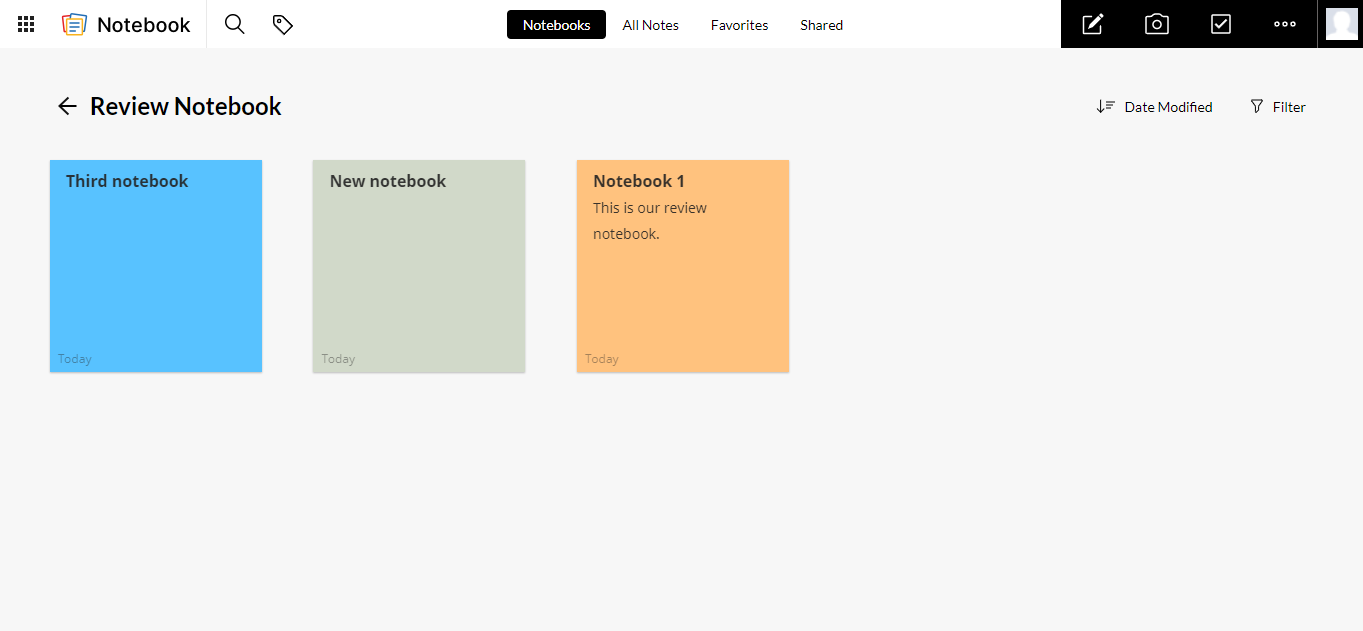TechRadar Verdict
If you want a simple app for storing notes and accessing them at any time, Zoho Notebook is a smart choice. But, it lacks the kind of advanced features that you’ll find on rival note-taking apps.
Pros
- +
Free to use
- +
User-friendly interface
- +
Encryption (Password lock)
- +
Supports collaboration
Cons
- -
Few exporting options
- -
Limited text formatting
- -
Occasionally slow
- -
Buggy notifications/reminders
Why you can trust TechRadar
Zoho is an Indian multinational technology specializing in low-cost, cloud-based software. The company was founded by an Indian entrepreneur named Sridhar Vembu. It’s headquartered in Chennai, India, and employs over 12,000 people worldwide.
The company offers an extensive suite of cloud-based software. Its most popular products include a word processing app, spreadsheet software, and a presentation program. It also has many lesser-known products, including the note-keeping app we’re reviewing.
Some Zoho apps cost money to use, while some are free. Zoho Notebook falls into the latter, which is an attractive point to users. Many of these users consider it to be an effective note-taking app, according to published reviews. We decided to confirm for ourselves if it lived up to the hype surrounding it.

Zoho Notebook: Plans and pricing
It doesn’t cost a dime to use Zoho Notebook. It’s one of the products Zoho offers for free, with the costs covered by the company’s revenue from other lines of products. It’s more of a tool to draw users into the Zoho ecosystem, a significant percentage of whom may go on to use other (paid) products.
Zoho Notebook: Features
You must have a Zoho account to use the company’s notebook app. You can easily create one on the official website, and it grants access to all Zoho services.
Once you have a Zoho account, you can access the notebook app through the web-based interface or native desktop (Windows, Mac, or Linux) and mobile (iOS or Android) apps. Zoho Notebook is one of the few note-taking apps we’ve reviewed that has a native app for the Linux operating system.
The app works this way; you can create an unlimited number of digital notebooks and keep notes in them. The digital notebook works similarly to a hard copy one. Once you create a digital notebook, click on it, and you’ll see the option to add new pages. The main difference between it and a hard copy notebook is that there’s no limit on the number of pages you can have.
Sign up to the TechRadar Pro newsletter to get all the top news, opinion, features and guidance your business needs to succeed!

Once you open a notebook page, you can start typing in the content of your notes in it, which can be as long as you wish. You should be familiar with using the type of text editor present on the app. But, the options for formatting text are pretty limited. You can only change the style (Bold, Italicize, Underline, Strike-through, and Background Color). You can not change the font, text size, or anything of that sort.
Other notable things you can do with the text editor include inserting tables, bullet lists, or quotes. One peculiar feature we observed is the ability to create checklists. A checklist entails a checkbox attached to lines of text representing tasks that you want to complete. Once you complete any task, you can mark the checkbox to indicate so. It’s a practical tool to help you organize and manage your tasks.
Another noteworthy feature is that you can add images (from your device) to your digital notebooks.
Once you’re done creating a note, Zoho allows you to share it either privately with other Zoho users or through a public link with which anyone can access it. You can also lock your notes with a password to prevent unauthorized access.

Zoho Notebook: Interface and use
We found it pretty easy to navigate the Zoho Notebook app. It has a user-friendly interface that makes it enjoyable for users. But, one problem we observed is that the app slows down significantly after adding images to a note. This observation is a recurring complaint in many user reviews.
Zoho Notebook: Support
If you’re a paid Zoho subscriber, you can access direct customer support through email, live chat, or telephone, 24/7. But, free users don’t have this option. The best option for them is the official support center containing extensive user guides and solutions to frequently encountered problems for every Zoho product.
The support center is also helpful for paid users and should be the first place to consult before opting for direct support if you don’t find satisfactory answers.
Zoho Notebook: The competition
Zoho Notebook’s main competitors include Google Keep, Dropbox Paper, and Simplenote. We highlighted these three competitors because they’re all free to use. Zoho Notebook offers similar functionalities to these competitors but with a more complex user interface.
Zoho Notebook: Final verdict
The main reason we’ll advise readers to pick Zoho Notebook as their go-to note-taking app is because it’s free. At no cost, you can use the software to effectively store and organize your notes. We also like that you can encrypt your notes with passwords to prevent unauthorized people from accessing them.
The platform’s notable disadvantages include limited text formatting and being occasionally slow, particularly after adding images.
We've featured the best iPad Pro note-taking apps.
Stefan has always been a lover of tech. He graduated with an MSc in geological engineering but soon discovered he had a knack for writing instead. So he decided to combine his newfound and life-long passions to become a technology writer. As a freelance content writer, Stefan can break down complex technological topics, making them easily digestible for the lay audience.

